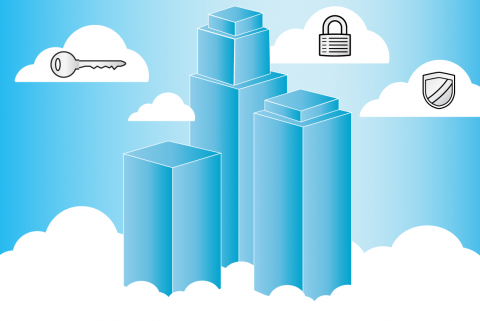Most organizations these days must use cloud providers for at least some of their essential systems. That means dealing with cloud vendors. But most cloud vendors have a long and growing list of customers, and you're just one of them. How do you tip the odds in your favor? In part two of a two-part interview, Rich Hillebrecht, vice president and CIO of the application performance monitoring software provider Riverbed Technologies proposes some strategies.

The Enterprisers Project (TEP): What are some other effective strategies for dealing with hybrid cloud problems and cloud providers?
Hillebrecht: All hands on deck. You cannot fight these battles alone. Pull in your critical service providers and your trusted peer network to help shed light on what is happening out there. This means reaching out to other IT executives and banding together to address issues like compromised server farms.
TEP: Is this something you pull together in general to achieve better transparency and control, or only in an emergency situation such as an outage or breach? How can having other hands on deck help you?
Hillebrecht: You can think of it as both a proactive model and a reactive model. On the proactive side, it means reaching out to other IT executives and colleagues and banding together as a community to better define the agenda between enterprise customers and service providers as we go through this sea change.
For example, what are the key management issues to address for transparency and interoperability in multi-supplier, hybrid cloud environments? Standards and operating mechanisms that can simplify an inherently complex landscape must continue to be part of IT's core management practices. Joining with other IT executives helps because the combined voice of many customers carries more weight with suppliers.
On the reactive side, the process is akin to crowdsourcing, where real-time information can be shared across multiple enterprise customers to gives insights on issues at hand and how to address them. This is a growing practice in the security industry for advanced threat detection and response, but it can be implemented with other situations, such as SaaS performances issues.
Using application performance monitoring and network performance monitoring tools that can collect, aggregate and correlate information allows IT teams to respond more effectively. With these resources and trained staff it's easier to see where the issues reside and then speak with IT colleagues to raise the issue with a cloud vendor. If you're all experiencing the issue and have data to show where it resides you have a better case for influencing the vendor and guaranteeing performance issues are short-lived or don't happen at all.
TEP: What are some of the questions to ask yourself or particular KPIs to look at when trying to predict when and where the next problem will occur? And once you do pinpoint the origins of a problem, what are some steps you can take to avoid having it in the future?
Hillebrecht: For KPIs, the first thing to do is to define what key questions you are trying to answer. When it comes to being predictive regarding end-user performance of IT applications, key questions to start with are: Do we understand the variables that impact performance? Have we instrumented the environment in a way that allows us to capture the data we need to measure performance? Have we defined acceptable performance?
Paths to avoid include not fooling yourself with performance measures from local testing when your intent is to deploy globally. Also, don't simply instrument an alert when a critical threshold has been exceeded. Trend analysis is critical to predict break points and it's better to get an alert as major changes happen versus waiting for the breaking point.
For reliability, you need to understand integration points and dependencies between systems — mapping logical data flows to the physical world. Real-time views of network and infrastructure allow you to better understand impact of a change before the change is made.
TEP: Any other advice you'd offer CIOs about managing a hybrid enterprise?
Hillebrecht: The hybrid enterprise is born out of business needs. In reality, customers and/or employees, who are people, determine business needs. CIOs must take the human element into consideration when implementing technologies and develop a strategy that's based on an employee or customer understanding, appreciating and enjoying a particular technology or its results. This translates into adoption, whether you're in IT working to guarantee employee or line of business success or you're a tech vendor working to sell new products.
Rich Hillebrecht is Vice President and Chief Information Officer at Riverbed Technology, responsible for leading Riverbed’s enterprise IT operations and strategy. He is focused on identifying and delivering strategies that bring value for Riverbed customers, partners and shareholders. Previously, he served as Vice President of IT at Riverbed and was responsible for overseeing the company’s enterprise architecture initiatives and IT program management office, which included the deployment of Riverbed's application performance management solutions across the company. Hillebrecht has more than 25 years of IT leadership experience aimed at enabling enterprises to achieve their corporate objectives.




